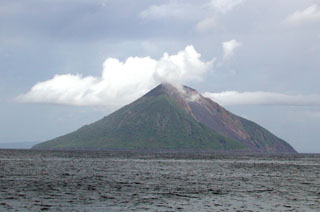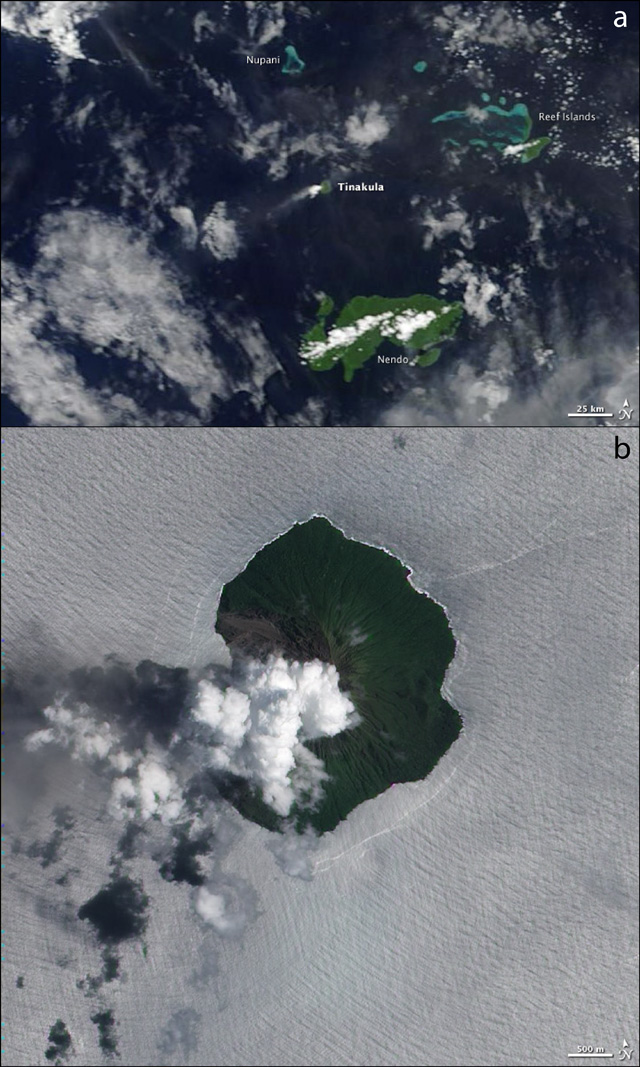Report on Tinakula (Solomon Islands) — February 2012
Bulletin of the Global Volcanism Network, vol. 37, no. 2 (February 2012)
Managing Editor: Richard Wunderman.
Tinakula (Solomon Islands) Thermal alerts measure probable continuing eruptions
Please cite this report as:
Global Volcanism Program, 2012. Report on Tinakula (Solomon Islands) (Wunderman, R., ed.). Bulletin of the Global Volcanism Network, 37:2. Smithsonian Institution. https://doi.org/10.5479/si.GVP.BGVN201202-256010
Tinakula
Solomon Islands
10.386°S, 165.804°E; summit elev. 796 m
All times are local (unless otherwise noted)
Since our last report of July 2011 (BGVN 36:08), MODVOLC thermal alerts have continued to be measured at a rate of 3 to 11 days per month over Tinakula volcano, a volcano in frequent, if not constant eruption. Thermal alerts occurred over 11 days in January 2012 and 7 in February 2012. This trend of alerts has continued since about August 2010; the eruption is reported to have begun ~September 2008. According to NASA, "Over the past decade satellites have detected intermittent 'thermal anomalies' on the island that suggest eruptions have taken place, but eyewitness observations are infrequent."
During 13-14 February 2012, the satellite-borne MODIS radiometer detected a small plume in visible imagery (figure 11a). Figure 11b, a satellite image acquired 14 February 2012, shows a plume of volcanic gas, possibly mixed with a bit of ash, rising above the island's summit.
Geological Summary. The small 3.5-km-wide island of Tinakula is the exposed summit of a massive stratovolcano at the NW end of the Santa Cruz islands. It has a breached summit crater that extends from the summit to below sea level. Landslides enlarged this scarp in 1965, creating an embayment on the NW coast. The Mendana cone is located on the SE side. The dominantly andesitic volcano has frequently been observed in eruption since the era of Spanish exploration began in 1595. In about 1840, an explosive eruption apparently produced pyroclastic flows that swept all sides of the island, killing its inhabitants. Recorded eruptions have frequently originated from a cone constructed within the large breached crater. These have left the upper flanks and the steep apron of lava flows and volcaniclastic debris within the breach unvegetated.
Information Contacts: Hawai’i Institute of Geophysics and Planetology (HIGP), MODVOLC Thermal Alerts System, School of Ocean and Earth Science and Technology (SOEST), Univ. of Hawai’i, 2525 Correa Road, Honolulu, HI 96822, USA (URL: http://modis.higp.hawaii.edu/); NASA Earth Observatory (URL: http://earthobservatory.nasa.gov/NaturalHazards/view.php?id=77183).


